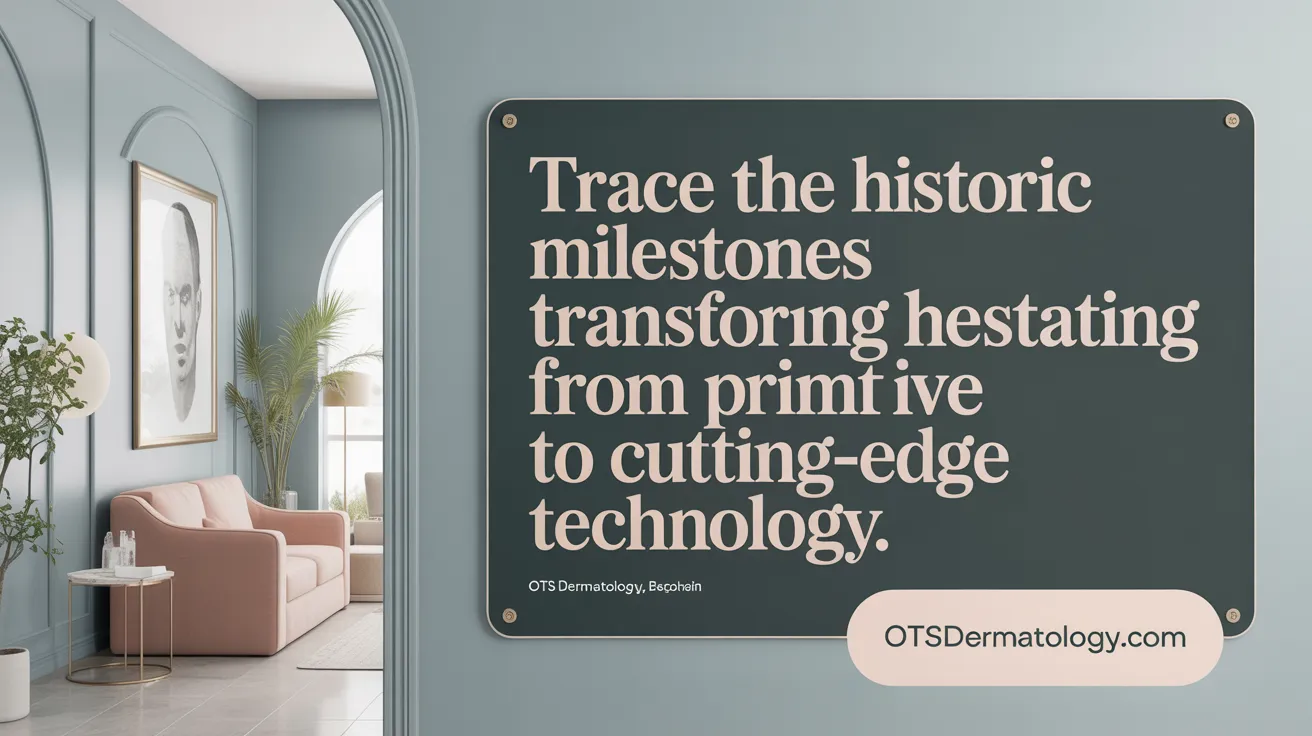Entering a New Era of Hair Restoration
Hair restoration has witnessed unprecedented advancements in recent years, blending biotechnology, robotics, and innovative medical therapies to redefine how hair loss is treated. From refined surgical techniques to burgeoning genetic and regenerative therapies, 2024 brings a wave of options designed for natural, effective, and personalized hair regrowth. This article explores the latest technologies, current treatments, emerging breakthroughs, and the future prospects that every individual considering hair restoration should know about.
From Tradition to Innovation: The Evolution of Hair Transplant Techniques

How has hair transplant technology evolved historically up to the current state?
Hair transplant technology has made remarkable progress over the decades. It all began with Dr. Norman Orentreich in the 1950s, who pioneered the concept of donor dominance, establishing that hair taken from the back of the scalp could be transplanted to balding areas with successful growth. In the 1980s, surgeons improved aesthetic results using mini- and micro-grafts, which involved dissecting donor hair into smaller units for a more natural look.
The 1990s introduced Follicular Unit Transplantation (FUT), a method that dissects hair into natural follicular units, resulting in denser, more realistic hair patterns. This technique also reduced the unnatural
Cutting-Edge Surgical Methods: Current and Upcoming Hair Transplant Techniques

What are the current and upcoming hair transplant techniques, including robotic methods, FUE, NeoGraft, and hair cloning?
Modern hair restoration has seen remarkable progress in surgical techniques, offering more natural results with minimal scarring. The most widespread methods today are Follicular Unit Extraction (FUE) and Follicular Unit Transplantation (FUT). FUE involves extracting individual hair follicle units directly from the scalp using tiny punches, avoiding linear scars and allowing quicker recovery. Recently, the introduction of NeoGraft technology has automated parts of the FUE process, enhancing precision and reducing human error.
Robotic-assisted surgeries, such as those utilizing the ARTAS system, incorporate advanced robotics and artificial intelligence to improve the efficiency and accuracy of graft harvesting. These systems can independently select optimal follicles and carefully remove them, ensuring consistent quality and natural growth patterns. Since its launch, ARTAS has gained acclaim for its minimally invasive approach and precise graft placement.
Direct Hair Implantation (DHI) is another advancement, where specially designed implanter pens are used to place follicles directly into the scalp in a single step. This method optimizes graft survival by reducing handling time and trauma.
Research into hair cloning is ongoing, representing a future frontier in hair restoration. Hair cloning aims to cultivate new hair follicles outside the body from stem cells or follicular cells, potentially addressing the limitations imposed by donor hair supply. Although still in experimental phases, successful development could revolutionize treatment options, making permanent, limitless hair growth possible.
In summary, contemporary techniques focus on minimally invasive, highly precise procedures using robotic systems and improved graft handling, while in the pipeline, hair cloning offers the promise of a no-limits solution to hair loss.
What are the latest innovations and trends in surgical hair restoration?
| Technique/Innovation | Description | Benefits | Future Potential |
|---|---|---|---|
| FUE & NeoGraft | Automated follicle extraction | Less scarring, quick recovery | Increased automation and precision |
| Robotic-assisted systems | AI-powered follicle harvesting | Consistency, minimized errors | Larger, more natural transplants |
| Direct Hair Implantation | Single-step graft placement | Higher graft survival | Expanded use in clinical practice |
| Hair Cloning | Lab-grown follicles from stem cells | Unlimited donor supply | Game-changing, long-term solution |
| Advanced graft handling | Microscopic dissection, precision tools | Improved survival rates | Further reduction in tissue trauma |
Staying updated on these technologies ensures access to the most effective, natural-looking, and minimally invasive options for hair restoration.
Non-Surgical Paradigms: Expanding Options Beyond Surgery
 Non-surgical hair restoration options have gained prominence as effective, less invasive alternatives to traditional surgery. These treatments focus on stimulating the hair follicles and promoting natural growth through various innovative methods.
Non-surgical hair restoration options have gained prominence as effective, less invasive alternatives to traditional surgery. These treatments focus on stimulating the hair follicles and promoting natural growth through various innovative methods.
One of the most prominent treatments is Platelet-Rich Plasma (PRP) therapy. It involves drawing the patient’s blood, processing it through centrifugation to concentrate growth factors, and injecting this plasma into the scalp. PRP activates dormant follicles and encourages new growth, with most patients noticing improvements after a series of sessions spaced four to six weeks apart.
Low-Level Laser Therapy (LLLT) is another popular option. It employs specific wavelengths of laser light, often delivered via laser caps or combs, to stimulate cellular activity in hair follicles. This non-invasive treatment enhances blood flow and increases nutrient delivery, promoting healthier, thicker hair. Results can be observed within about six months with regular use.
Microneedling combined with TransEpidermal Delivery (TED) creates tiny punctures in the scalp’s surface, which triggers natural healing responses and promotes follicle rejuvenation. The micro-channels also enable active ingredients, such as growth factors or medications, to penetrate deeper into the scalp, boosting their efficacy. Typically, monthly sessions are recommended, often combined with PRP or topical growth serums.
Medications like minoxidil (topical) and finasteride (oral) remain mainstays in non-surgical treatment plans. Minoxidil increases blood flow and supplies oxygen to hair follicles, helping to slow loss and stimulate growth, especially in early stages. Finasteride blocks DHT hormone production, which is linked to male pattern baldness. Newer formulations and combination therapies are also under study for improved efficacy.
Emerging regenerative medicine approaches involve stem cell therapies and exosome treatments. Stem cells derived from adipose tissue or the scalp are scrutinized for their ability to signal follicle regeneration. Exosomes—tiny vesicles released by healthy cells—are rich in growth factors and cytokines, delivering cellular signals that promote healing and hair growth.
Together, these non-surgical options form a versatile toolkit for hair restoration. They are particularly suited for early or moderate hair loss and can be combined with each other for a customized, multi-modal approach to stimulate hair growth safely and effectively.
Biotechnology Breakthroughs: Gene Editing, Stem Cells, and Molecular Innovations

What breakthroughs and developments have biotechnology and regenerative medicine contributed to hair restoration research?
Biotechnology and regenerative medicine have significantly advanced the field of hair restoration by introducing novel, minimally invasive, and potentially permanent solutions. One of the most promising innovations is CRISPR gene editing, which allows scientists to precisely target and modify specific genes within hair follicle cells. This approach could correct genetic causes of hair loss, opening the door to highly personalized therapies.
In addition to gene editing, stem cell therapies are gaining ground. Researchers are exploring the use of cells derived from adipose tissue (fat) or scalp tissue to stimulate follicle regeneration. These cells have the potential to activate dormant follicles or even grow new ones, offering hope for those with advanced hair loss.
Another exciting development involves exosome therapy. Exosomes are tiny vesicles released by healthy cells that facilitate cell signaling. When used in hair restoration, these vesicles promote cell proliferation and communication, leading to encouraging results in stimulating hair growth without invasive procedures.
Emerging molecules such as PP405 and AMP-303 are also making waves. UCLA scientists developed PP405, a small molecule that activates hair follicle stem cells by inhibiting specific proteins, resulting in hair regrowth from dormant follicles. Similarly, UC Irvine researchers created AMP-303, which signals sleeping follicles to re-enter the growth phase, leading to increased hair density after just one treatment cycle.
Nanotechnology further enhances the precision and effectiveness of hair treatments. Using nanoparticles, medications can be delivered directly to targeted hair follicles, increasing absorption efficiency and reducing systemic side effects.
Finally, 3D bioprinting aims to create functional, lab-grown hair follicles layer-by-layer, combining biocompatible materials and living cells. While still in experimental stages, this regenerative approach promises the possibility of custom-designed follicles tailored to individual needs, potentially transforming future hair restoration practices.
Overall, these breakthroughs underscore a dynamic shift toward biological, genetic, and regenerative solutions that could revolutionize hair restoration, making permanent and natural-looking hair regrowth a realistic goal for many patients.
Integrating Technology and Personalization: AI, Robotics, and Wearables in Hair Restoration
Modern hair restoration is increasingly driven by cutting-edge technology that personalizes treatment and enhances precision.
Robotic systems such as the ARTAS robotic hair transplant system are now widely used. These machines perform automated follicular unit harvesting with remarkable accuracy, reducing human error, shortening procedure times, and improving the natural appearance of transplanted hair. Similarly, innovations like No Shave FUE allow for follicle extraction without shaving the donor area, making the process more discreet and less invasive.
Another advanced technique is Precision Follicular Extraction, which employs ultra-fine blades and micro-tools to carefully harvest grafts, minimizing donor site trauma and maximizing graft quality. These developments ensure a higher success rate for transplants and more seamless results.
Artificial Intelligence (AI) plays a significant role in tailoring treatments. AI algorithms analyze vast amounts of patient data—such as scalp health, hair loss patterns, and previous outcomes—to recommend personalized strategies and predict the most effective interventions. This data-driven approach helps both clinicians and patients make informed decisions.
Wearable scalp monitoring devices are emerging as valuable tools in this landscape. These devices track vital scalp health parameters, including blood flow, temperature, and pH levels, in real-time. Such continuous monitoring enables clinicians to adjust treatments dynamically and provides patients with personalized insights into their scalp condition.
Research into the scalp microbiome—the community of microorganisms living on the scalp—has revealed its influence on hair health. Maintaining a healthy microbial balance through probiotics or prebiotics may help prevent hair thinning and support overall scalp wellness.
In summary, the integration of AI, robotics, wearable sensors, and microbiome research is transforming hair restoration into a highly personalized, minimally invasive, and effective field. These innovations promise better outcomes and greater patient satisfaction in the near future.
Balancing Surgical and Non-Surgical Approaches: Benefits, Effectiveness, and Patient Considerations

How do surgical and non-surgical hair restoration methods compare in terms of benefits, procedures, and effectiveness?
Surgical hair restoration techniques, notably follicular unit extraction (FUE) and follicular unit transplantation (FUT), are designed to produce long-lasting, natural results by transplanting viable hair follicles into bald or thinning areas. FUE is especially popular because it involves extracting individual follicles through tiny punches, minimizing scarring and reducing recovery time. FUT involves removing a strip of scalp tissue, which can leave a linear scar but allows for a large number of grafts in a single session. These procedures usually deliver immediate, noticeable improvements, particularly effective for patients with advanced or patchy hair loss.
In contrast, non-surgical treatments are less invasive and generally safer with fewer risks. Common options include medications like finasteride and minoxidil, platelet-rich plasma (PRP) injections, low-level laser therapy (LLLT), and topical growth factor treatments. These methods typically require ongoing maintenance, such as regular application or repeated sessions, to sustain and enhance results. They are particularly suitable for those in early stages of hair thinning or those who prefer to avoid surgery. While non-surgical options tend to have a slower onset of noticeable effects and their success can vary based on individual factors, they serve as effective adjuncts or alternatives depending on patient needs.
Benefits and limitations of each approach
Surgical methods provide durable and immediate results, which can significantly boost self-confidence. They are best suited for patients with sufficient donor hair and who seek a permanent solution. However, they involve anesthesia, potential scarring, and a recovery period. Learn more about surgical hair restoration benefits and procedure details.
Non-surgical treatments offer a non-invasive, low-risk approach ideal for early-stage thinning or maintenance. They are typically more affordable and have fewer side effects but may deliver less dramatic results and require persistent treatment over time. For an overview of non-surgical hair loss treatments, see more here.
Safety, efficacy, and long-term outcomes
Surgical procedures have a high success rate with natural-looking results and longevity when performed by experienced surgeons. Risks are minimal but include infection, scarring, and graft failure if not properly managed. Non-surgical treatments like PRP and medications are generally safe; side effects are rare but can include scalp irritation or sexual dysfunction (finasteride). Explore the safety and patient satisfaction with hair restoration in detail.
Long-term success depends on ongoing management and individual response to therapy. Combining the two can often improve outcomes, with surgery restoring density and non-surgical options maintaining and stimulating growth. Evidence supports combination therapy approaches.
Combination therapies and patient suitability
Many patients benefit from a personalized combination of surgical and non-surgical treatments. For example, a person might undergo a hair transplant for definitive coverage and use PRP or medication to preserve ongoing hair health. Find more about combining surgical and non-surgical hair restoration therapies.
Suitability depends on factors such as age, body health, extent of hair loss, hair quality, and personal preferences. Candidates must have viable donor hair for surgery and realistic expectations. An expert hair restoration consultation is recommended.
Guidance for personalized treatment planning
Consultation with a qualified specialist is crucial to assess individual needs and plan an optimal treatment strategy. Factors like scalp condition, age, genetic predisposition, and driving motivations inform the best approach. Review how to plan personalized hair restoration treatments.
A comprehensive plan often includes education on how each treatment works, expected outcomes, and maintenance requirements, ensuring patients choose options aligned with their goals and lifestyle. For details on personalized hair restoration techniques and patient expectations.
Looking Ahead: The Future of Hair Restoration
The landscape of hair restoration is rapidly evolving, driven by breakthroughs in genetics, regenerative medicine, robotics, and AI. Patients today have access to a diverse array of sophisticated surgical and non-surgical treatments that promise more natural, effective, and personalized results than ever before. Ongoing research in hair follicle cloning, gene editing, and bioprinting heralds a future where permanent, unlimited hair restoration could become a reality. As technology advances, integrating patient-specific data and embracing minimally invasive approaches will be key to optimizing outcomes. Staying informed about these cutting-edge developments ensures that individuals confronting hair loss can make empowered decisions and look forward to promising new solutions on the horizon.
